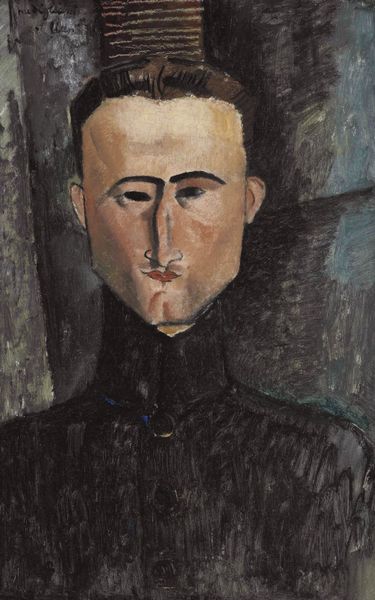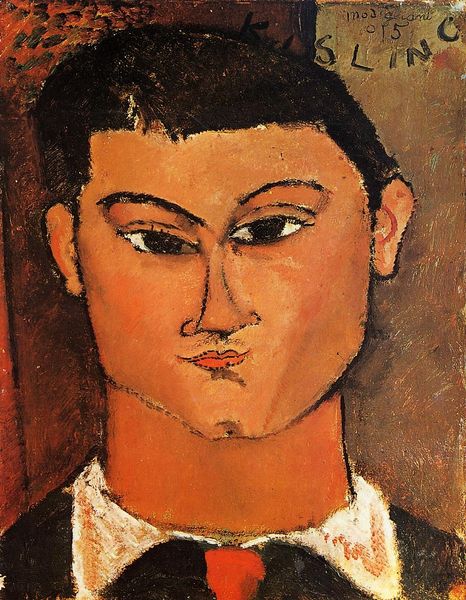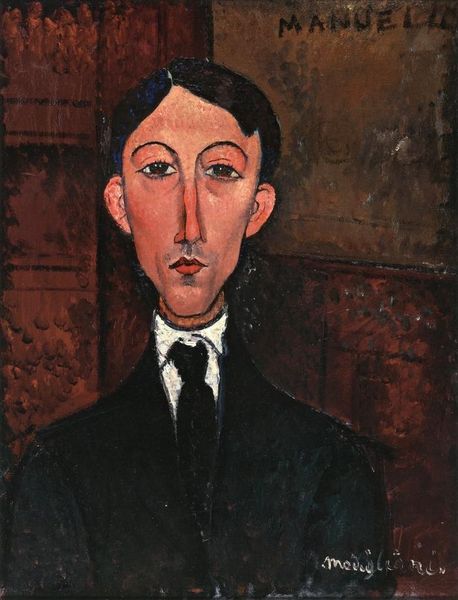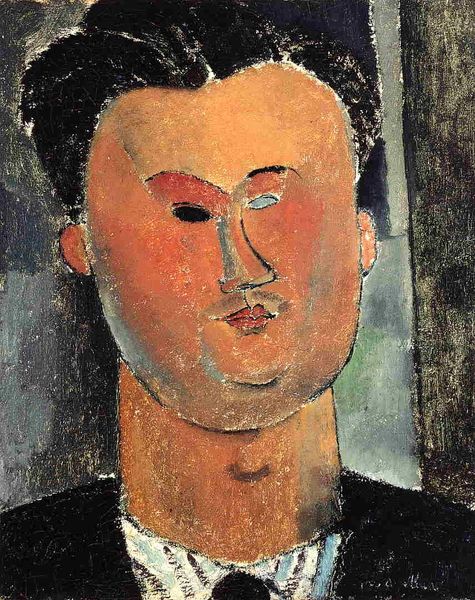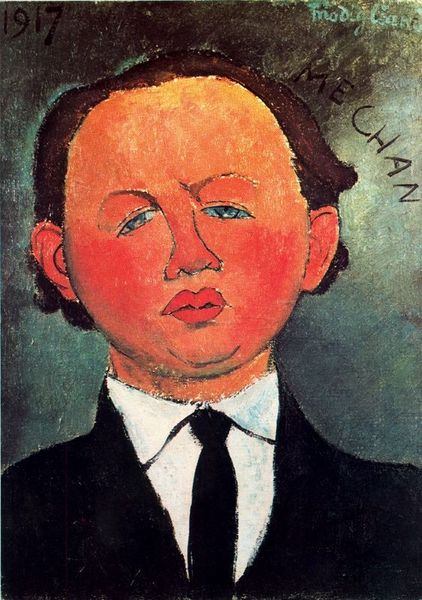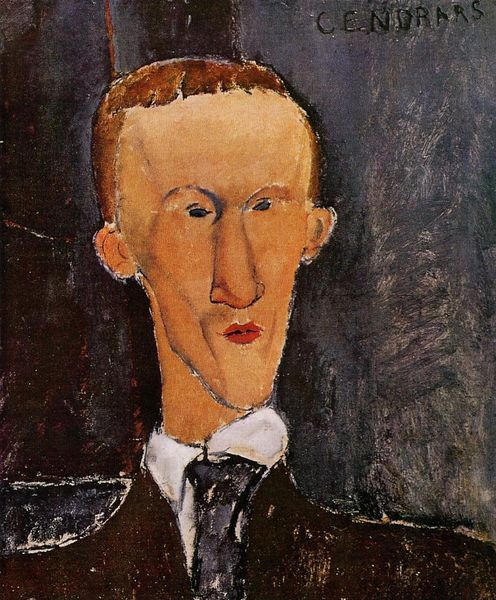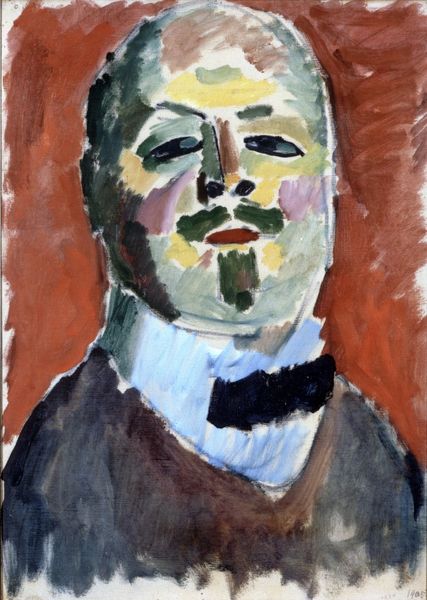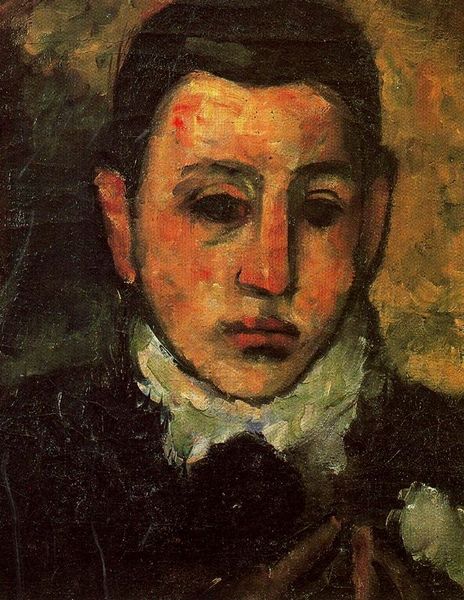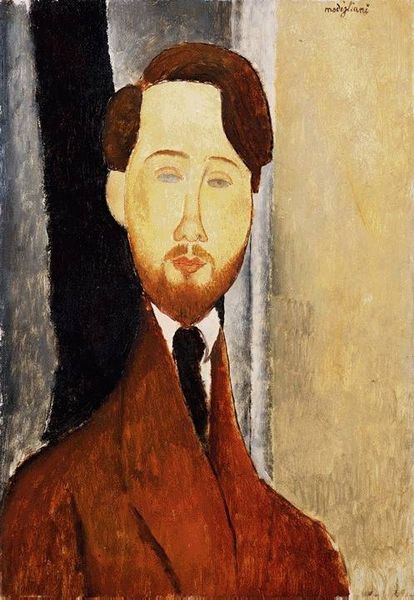
oil-paint, impasto
#
portrait
#
oil-paint
#
oil painting
#
impasto
#
intimism
#
expressionism
#
italian-renaissance
#
modernism
Dimensions: 54 x 38 cm
Copyright: Public domain
Curator: Let’s turn our attention to Amedeo Modigliani’s "Paul Guillaume," painted in 1916. It’s currently held in a private collection. Editor: It has this haunting elegance, doesn't it? Those almond-shaped eyes, that slightly pursed mouth... he's almost feline, gazing out with a sort of cool detachment. Curator: Modigliani painted Guillaume several times. Guillaume was, of course, an important art dealer of the time, a key figure in promoting avant-garde art in Paris. These portraits helped to establish and solidify Guillaume’s role as a taste-maker. Editor: I see a strange combination of tenderness and authority here. Modigliani uses a very limited palette, mostly earth tones, to make him a figure both grounded and enigmatic, what do you make of that? It’s intimacy on display, or performed, anyway. Curator: Well, I think Modigliani wanted to present Guillaume as both a modern man and something of a timeless one. Note the elongation of the face and neck. Those stylistic choices recall the Italian Renaissance, yet there's also a clear nod to modernist aesthetics in the flattening of forms. Editor: True. And even the way he's labeled the canvas in bold letters, like branding him almost... there’s a touch of irreverence that tickles me, actually. Did they have a good relationship do you know? Curator: From what we gather, it was complex. Guillaume supported Modigliani financially and provided him with studio space. Their relationship mirrored many artist-dealer dynamics of that era – intertwined professional and personal interests which at the time was critical for avant-garde movements in general. Editor: So Guillaume was essential to the artist's ability to simply exist and to practice, yet in return Modigliani turned him into, let’s say, art…it's quite circular when you consider it. Something touching as well, in its weird co-dependence. Curator: Absolutely. The portrait becomes a social document as much as a work of art. It reflects the complex relationships within the art world, where patronage and artistic genius often intersected, if not clashed, in fundamental ways. Editor: It makes me ponder about who gets to inscribe and define a person—an artist’s vision versus a subject's own. This one seems suspended in time. Curator: Well said. And thinking about its placement in a private collection now... the politics of access continues, even a century later.
Comments
No comments
Be the first to comment and join the conversation on the ultimate creative platform.
